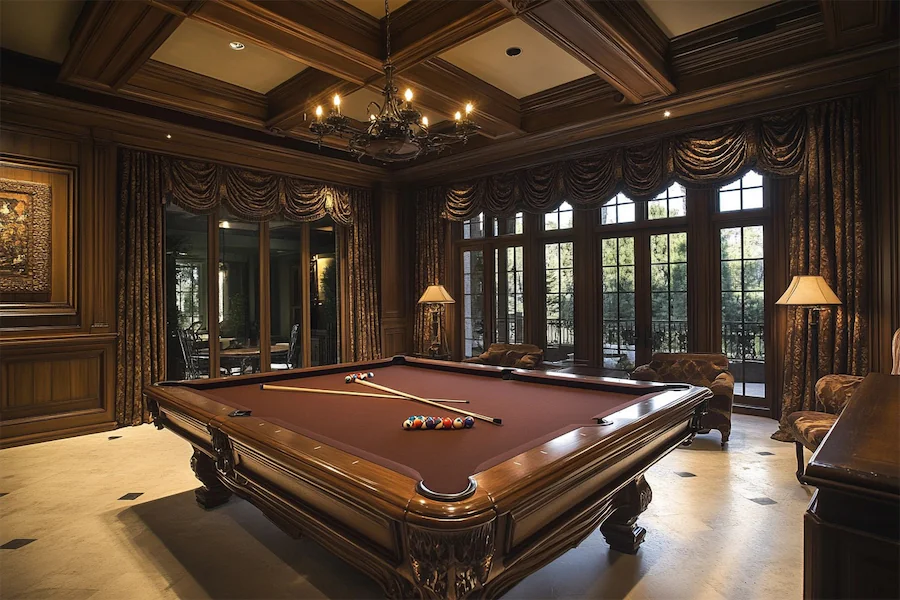Designing a Tudor Revival entertainment room involves blending historical architectural elements with modern amenities to create a space that is both functional and evocative of early English charm. Here’s a comprehensive guide to achieving this style:
Introduction to Tudor Revival Entertainment Rooms
Tudor Revival, also known as Mock Tudor, emerged in the late 19th and early 20th centuries, drawing inspiration from medieval English architecture. An entertainment room in this style combines traditional design elements—such as exposed wooden beams, leaded glass windows, and ornate fireplaces—with contemporary comforts to create a warm and inviting space for relaxation and socializing.
History and Origins of the Tudor Revival Style
The Tudor Revival movement began in the United States around 1890 as a romanticized tribute to England’s Tudor period of the 1500s. Early examples utilized stone with Flemish gables and Renaissance facade ornaments, while the half-timbering now associated with the style became more prevalent after 1915. This architectural trend sought to evoke the picturesque and storied charm of medieval English cottages and manors.
Key Features of Tudor Revival Entertainment Rooms
- Exposed Timber Framework: Incorporate dark wooden beams on ceilings and walls to emulate traditional half-timbering.
- Leaded Glass Windows: Feature windows with diamond or rectangular leaded panes to enhance the historical aesthetic.
- Ornate Fireplaces: Install a prominent fireplace with a stone or wooden mantel as a focal point, reflecting the central role of the hearth in Tudor design.
- Rich, Earthy Color Palette: Utilize deep, warm colors such as forest greens, burgundies, and browns to create a cozy atmosphere.
- Textured Walls and Ceilings: Apply plaster or wood paneling to add depth and authenticity to the space.
Applications of Tudor Revival Style in Entertainment Rooms
- Furniture Selection: Choose substantial, antique-style furniture made of dark wood, with upholstered pieces in rich fabrics like velvet or leather.
- Lighting: Incorporate wrought iron chandeliers and wall sconces to provide ambient lighting that complements the historic theme.
- Decorative Accents: Add tapestries, heraldic wall art, and period-appropriate accessories to enhance the Tudor ambiance.
- Modern Integration: Conceal modern entertainment equipment within custom cabinetry that matches the room’s traditional woodwork, maintaining aesthetic coherence.
Considerations When Designing a Tudor Revival Entertainment Room
- Authenticity vs. Modern Comfort: Strive for a balance between historical accuracy and contemporary comfort to ensure the room is both beautiful and functional.
- Space and Proportion: Ensure that the room’s dimensions can accommodate the substantial furniture and architectural details characteristic of Tudor design without feeling cramped.
- Natural Materials: Use authentic materials such as wood and stone to enhance the room’s historical feel, contributing to both aesthetics and durability.
Conclusion
A Tudor Revival entertainment room offers a unique blend of historical charm and modern functionality. By incorporating key architectural elements, carefully selecting furnishings, and balancing authenticity with comfort, you can create a space that serves as a welcoming retreat for entertainment and relaxation.
